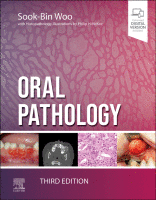Physical Address
304 North Cardinal St.
Dorchester Center, MA 02124

You’re Reading a Preview Become a Clinical Tree membership for Full access and enjoy Unlimited articles Become membership If you are a member. Log in here

You’re Reading a Preview Become a Clinical Tree membership for Full access and enjoy Unlimited articles Become membership If you are a member. Log in here

Non-Hodgkin lymphoma (NHL) is the second most common malignancy to arise in the oral cavity after squamous cell carcinoma, yet only accounts for 3.5% of all oral cavity malignancies. Among all lymphomas, oral cavity NHLs are rare, representing approximately 2%…

As with odontogenic cysts and tumors, any nonodontogenic tumor may cause jaw and facial swelling, pain, mobility of teeth, resorption of teeth roots, teeth displacement, and paresthesia. The symptoms and signs depend on the size of lesions, how long the…

True cysts Nasopalatine duct (incisive canal) cyst This is the most common nonodontogenic cyst of the jawbones. Clinical and radiographic findings This is most frequently encountered in the fourth and fifth decades of life with a slight male predilection, and…

Odontogenic tumors are classified as follows: (1) epithelial tumors with mature fibrous stroma without ectomesenchyme, (2) mixed epithelial and mesenchymal tumors, and (3) mesenchymal tumors with or without scarce epithelium (usually in the form of rests) ( Fig. 15.1 ).…

The tooth develops from the dental lamina, an ingrowth of the lining of the primitive stomodeum, and the dental lamina develops tooth buds for the primary and the permanent dentition ( Fig. 14.1 ). After odontogenesis, remnant epithelium is left…

This chapter discusses salivary gland tumors that occur with high frequency in the oral cavity with the understanding that even salivary gland tumors that tend to occur mostly in the major glands may also occur in the minor glands. Intraoral…

Mucocele The term mucocele sometimes is used to include both extravasation and retention mucoceles. Only the extravasation type should be termed mucocele while the retention type is a salivary duct cyst. They have different sites of occurrence, etiopathogenesis, and histopathology.…

Oral epithelial dysplasia is one of the most challenging entities for a pathologist. This chapter provides histopathologic features for the diagnosis of oral epithelial dysplasia, including HPV-associated oral dysplasia and guidance on how to distinguish dysplastic lesions from lesions exhibiting…